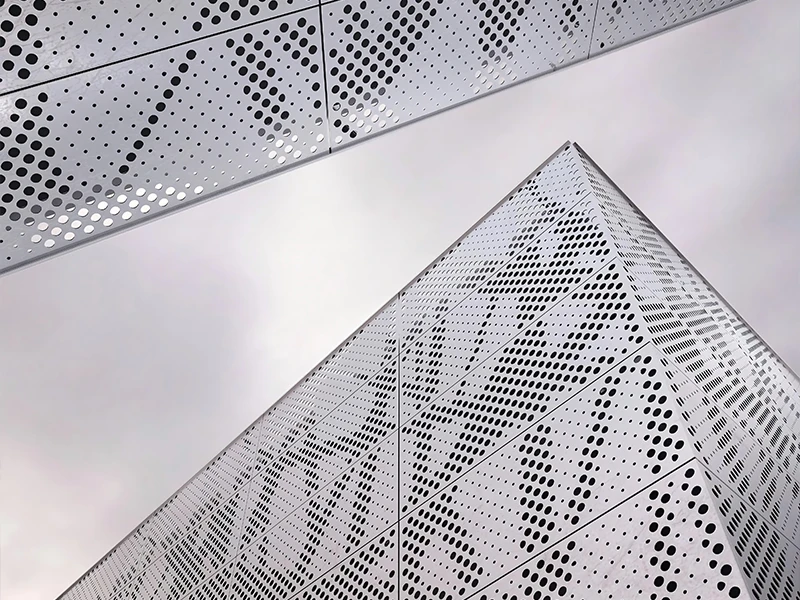
Exterior wall
Decorative Perforated Panel is a material widely used in architecture and interior design, favored for its unique patterns and translucency. These panels not only provide visual aesthetics but also allow for ventilation and natural light, commonly used in walls, ceilings, partitions, and other areas. They can be customized in shape and aperture according to client needs, making space design more flexible and personalized. In addition, perforated panels also possess certain acoustic properties, effectively reducing noise and enhancing environmental comfort.

Decorative perforated panels are commonly used on building exteriors, providing a sense of modernity and visual impact. They can create rich light and shadow effects through different apertures and arrangements, enhancing the appearance of the building. At the same time, perforated panels can also serve as sunshades, reducing direct sunlight and improving the energy efficiency of the building.

Exterior wall

Exterior wall

Exterior wall

Exterior wall

Exterior wall

Exterior wall
In interior design, perforated panels are widely used in ceilings. By using perforated panels, acoustic regulation can be achieved, reducing noise and improving the acoustic environment of the space. In addition, the design of perforated panels can be integrated with lighting systems to create unique lighting effects, enhancing the indoor atmosphere.

Ceiling

Ceiling

Ceiling

Ceiling

Ceiling

Ceiling
In open spaces, decorative perforated plates can be used as partitions or screens. Their translucency and visual privacy characteristics make space division both aesthetically pleasing and practical. Designers can customize different patterns and apertures according to needs to achieve the desired spatial effect.

Screens and Partitions

Screens and Partitions

Screens and Partitions

Screens and Partitions

Screens and Partitions

Screens and Partitions
Decorative perforated panels have various applications in modern design, meeting the needs of aesthetics, functionality, and environmental protection. With advancements in technology and the evolution of design concepts, the application fields of decorative perforated panels will continue to expand, becoming important elements in more design projects.